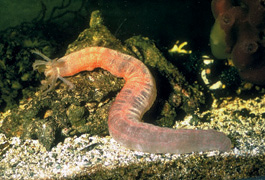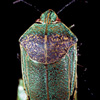 |
8.
Sea Cucumber / weli
Sea cucumbers [the Hawaiian name is weli or loli ] are
bottom-dwelling marine creatures that are our "reef janitors".
They are filter feeders and sift sand for the organic coating on the sand
grains. They also have a defense mechanism that is quite unique and not
something you would want to try at home. They essentially vomit their
entire insides (organs and all!) to escape from predators. After avoiding
a predator in that fashion, their insides regenerate in a few months.
Although they look quite different, these unusual creatures belong to
the same family as starfish and sea urchins. Once common throughout the
world's oceans, their number have recently been decimated by the voracious
demands of the huge Asian market, who consider them a dining delicacy
and a symbol of high esteem for a loved one. They have historically been
collected for the scrumptious gourmet dish, beche-de-mer. One species
(`unae) is collected and used in the Japanese dish, namako. Another
species, loli-pua, is the favorite for eating in Hawai`i.
Sea cucumbers come in two basic varieties: (1) those with tube feet, which
work on water pressure; and (2) those without tube feet. The common, large,
dark-colored sea cucumbers generally have tube feet on the lower surface
of the body that they use to glide over sand or pebbles. The sea cucumber
pictured above (weli) belongs to the group without tube feet. They
are jelly-like and have anchor-like small spicules or “spines”
over the entire body, making them feel sticky. They are often mistaken
for marine worms and are very common in some places in Kaneohe Bay. The
species depicted here was originally described from Pearl Harbor.
|

 GOOD GUYS & BAD GUYS
GOOD GUYS & BAD GUYS 


 GOOD GUYS & BAD GUYS
GOOD GUYS & BAD GUYS 


